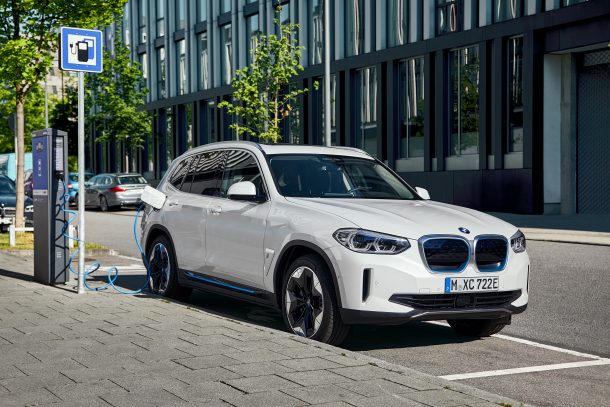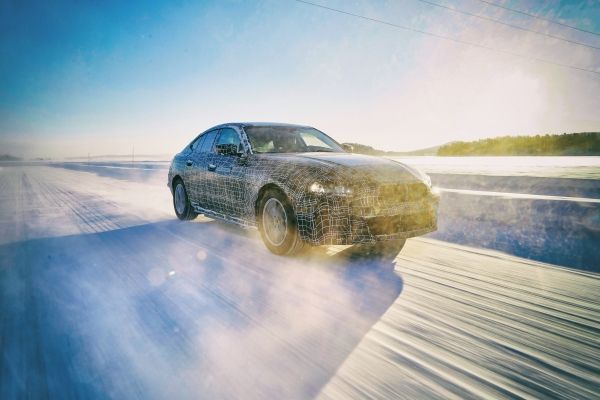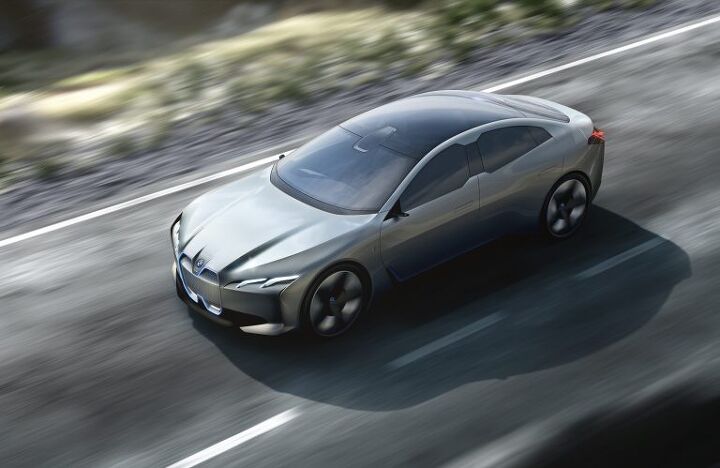#BMWIX3
BMW Debuts IX3: INext, Please
BMW revealed the production version of the iX3 crossover this week, adhering as closely to the 2018 concept as possible. More aerodynamic than your standard X3 and adorned with visual cues hinting at its status as a zero-emissions vehicle, Bavaria’s newest electric seems adequate transportation for those with modest expectations.
But this is supposed to be the first vehicle in the brand’s upcoming product offensive, a strategy aimed at helping it transition into the next Tesla or whatever fantasy scenario corporate leadership has deluded themselves into. Forget the i3 — this is what it looks like when BMW gets serious about electrification. That’s the marketing line being used to stir interest, at least. However, it starts to unravel a bit when you look at the vehicle’s capabilities and planned trajectory.
BMW IX3 Leaked
BMW’s i4 Concept may be the EV the brand currently has to promote, but it’s the iX3 that’s poised to become the brand’s all-electric cash cow. It’s entering a market space most other manufacturers agreed showed enough promise to launch other reasonably sized, plug-in crossovers (e.g. Tesla Model Y, Mercedes EQC, Jaguar E-Pace, Audi E-Tron). These are the vehicles seen as helping EVs pitch into the mainstream, offering both the planet’s preferred body style and adequate range for most commuters.
Up until now, we’ve seen most of what the industry has to offer in the premium electric crossover segment. Even the iX3 has been thrice teased by the manufacturer since announcing its existence at Auto China in 2018. But those were typically issued to us as conceptual renderings between spy shots of a vehicle that looked very much like the standard BMW X3. Recently leaked online, the production-ready iX3 hasn’t altered that opinion. In fact, it’s probably destined to end up being the most normal-looking EV on sale for a while.
Detail Drip: BMW Reveals Range of Electric Sedan, Crossover
This certainly won’t be of interest to people living in Tim Cain’s neighborhood, or indeed your own, but it just might be for the legions of North Americans who tell survey peddlers that they’re totally considering an electric vehicle for their next purchase. Note: telling a surveyor you’re considering an EV purchase is as weighty as telling them you’re considering moving to Canada if the next election doesn’t go your way. It’s a vague assurance of nothing.
Anyway, all that to say that a great many automakers are planning an EV onslaught in the coming decade, and buyers may or not greet them at the dealer door. BMW’s role in this product wave involves an electric version of the X3 crossover, plus an i4 sedan and iNext largeish crossover. As with all EVs, the biggest point of competition will be range, and we now have an idea of what to expect from Bimmer’s green machines.
BMW Takes Its EVs-from-China Plan Off the Burner
Unlike another German automaker, BMW isn’t jumping into “electromobility” (gag) with both feet. There’s an element of restraint in the automaker’s electrification plans, unlike Volkswagen’s bid to put 1 billion EVs on the moon by next week. Thanks to this cautious blend of profit-mindedness and environmental consideration, we now have high-margin vehicles positioned above the X7 SUV. (Bimmer needs the dough for green things.)
But electric BMW vehicles are already here, and more are on the way. Normal-looking ones, too, like the iX3 crossover — a battery-electric version of the popular X3, due to start rolling out of China next year. At least, Bimmer was due to begin exporting it, until the automaker took the needle off the record.
No Mass-produced BMW EVs Until 2020; Buyers Couldn't Handle the Cost, CEO Says
Luxury automakers aren’t in the business of losing money, and BMW doesn’t want to take a hit just because futurists claim the era of EVs is now. Until it has fifth-generation electric vehicle technology on hand, the German automaker plans to go easy on EV production, CEO Harald Krüger told analysts on Thursday.
While Bimmer’s long-range plans still call for 25 electrified models by 2025, 12 of them fully electric, Krüger said it would be too costly to hit the production throttle at this time. How much cheaper are the products designed around BMW’s fifth-generation technology? The difference (in percentage) amounts “a two-digit number,” the CEO claimed.




















Recent Comments